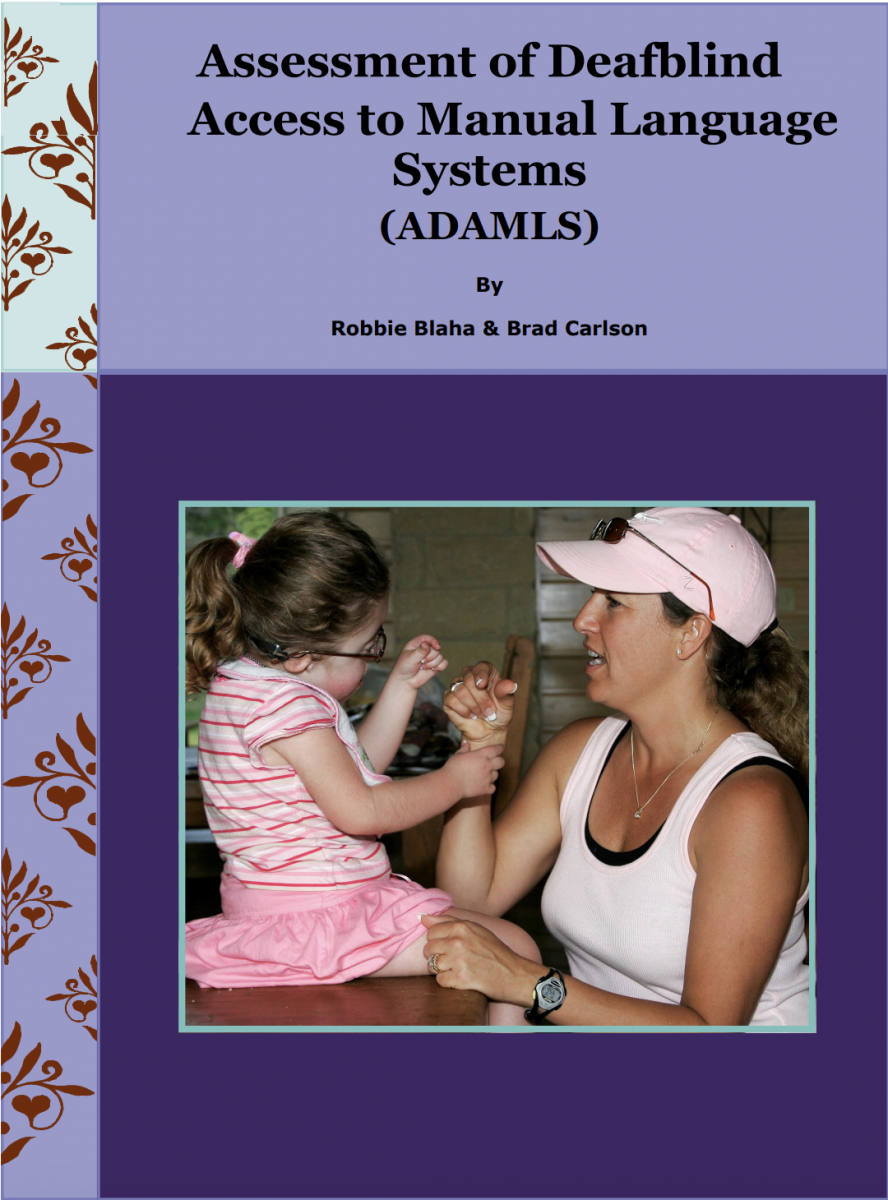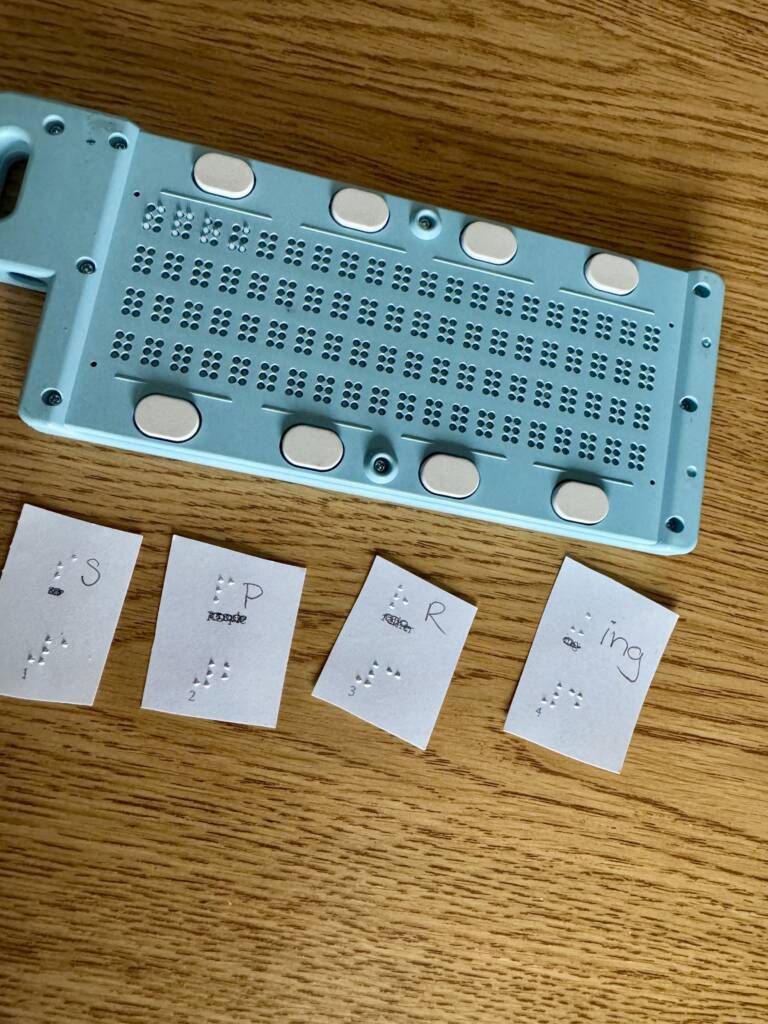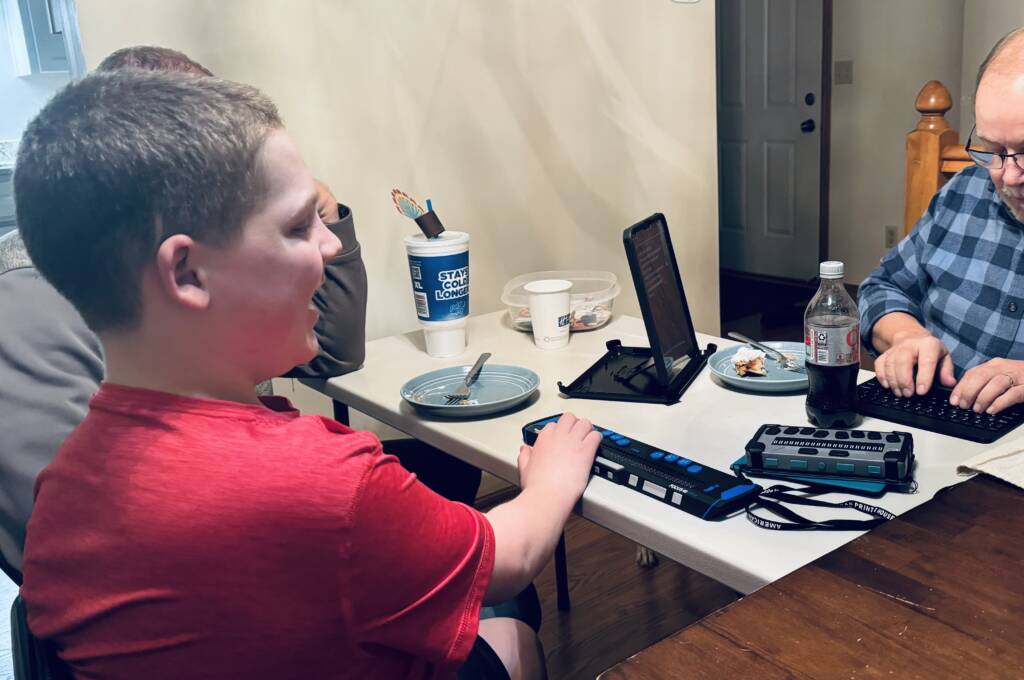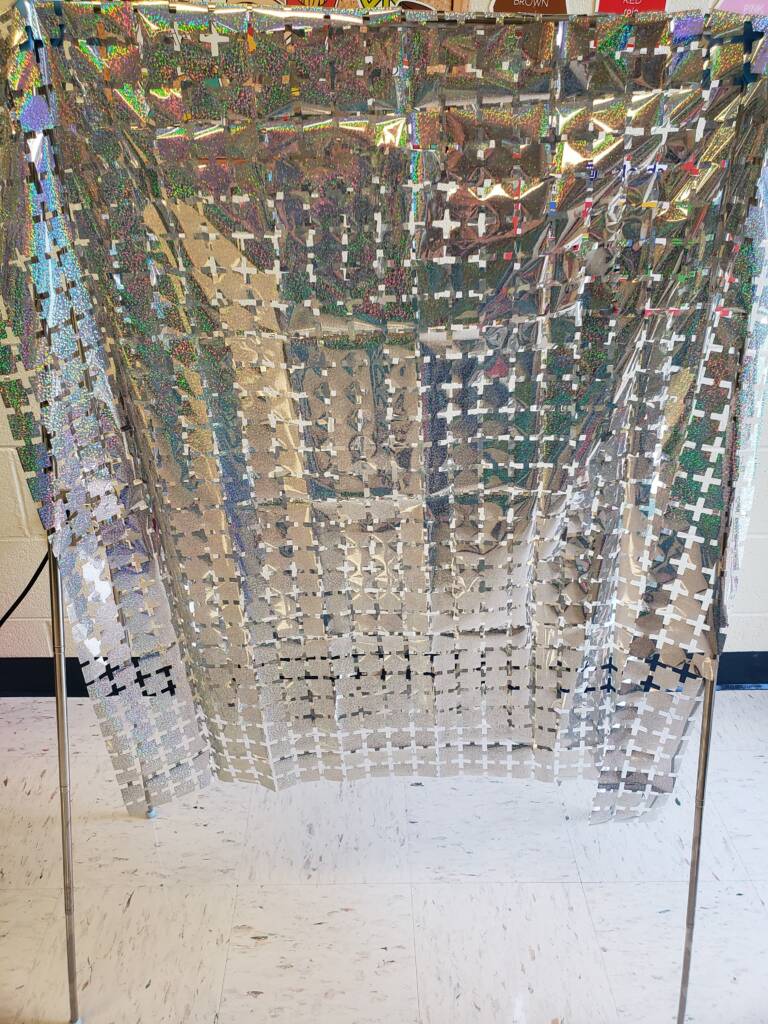If the student has a hearing loss, there are additional factors to keep in mind during the Learning Media Assessment (LMA).
- Consider the student’s etiology or the cause of their combined vision and hearing loss. It is important to gather as much information as possible on the type of vision and hearing loss. For example, conditions such as Usher Syndrome involve a hearing loss, and a particular type of vision loss (Retinitis Pigmentosa) which is a progressive, degenerative eye disease.
- Evaluate the effect of the student’s vision loss on accessing the method of communication. Because communication for people with a hearing loss is often highly visual, it is especially important to assess the impact of a vision loss on his or her method of communication. For example, the impact of visual field loss or acuity loss will have an effect on the ability to see pictures, sign language, facial expressions and other forms of communication.
- Be sure the LMA appropriately addresses the combined vision and hearing loss in relation to the primary literacy medium or learning channel. For example, if a student’s primary learning channel depends on access to auditory information, but he or she has a hearing loss, it will be critical that the necessary amplification (such as hearing aids or an FM system) be in place.
- Make sure the LMA appropriately addresses the learning media, methods, and materials in light of a dual sensory loss. For example, certain methods and activities may be less beneficial to a student with a hearing loss.
Questions to ask during the assessment process:
From the Assessment of Deafblind Access to Manual Language Systems (ADAMLS) by Robbie Blaha, Texas School for the Blind and Visually Impaired, and Brad Carlson
- What is the best space, placement, and distance of communication forms for the child related to his visual fields?
- What is the best rate and distance of communication forms for the child related to his acuity?
- Can the student visually discern non-manual signals that give meaning to the signs or spoken words?
- Does lighting affect a student’s ability to visually access information?
- Does the visual background affect the child’s comprehension?
- Can a student follow signed conversations in group settings?
- Would the student benefit from supplemental experience work to assist in understanding the concepts behind the signs or spoken word?
- Is the child’s vision such that he would benefit from the technique of co-active signing when learning new signs or speech cues?
- Does the child initiate or benefit from (hand) tracking?
- Does the child initiate or benefit from tactual signing?
- Does the student need additional environmental information provided to him?
- If a student will benefit from braille, are there English acquisition issues associated with students who are deaf or hard of hearing which should be addressed?
- Are there instructional strategies, materials, and tools typically used with students who are deaf or hard of hearing that may present problems for the students with deafblindness?
- Are there modifications to standard interpreting arrangements or signed classroom instruction that need to be addressed?
- Does the student have skills to advocate for the modifications he needs?
For more information, see also:
-
Making Sure the Learning Media Assessment, Functional Vision Evaluation and Communication Assessments Address Dual Sensory Loss from Texas School for the Blind and Visually Impaired




